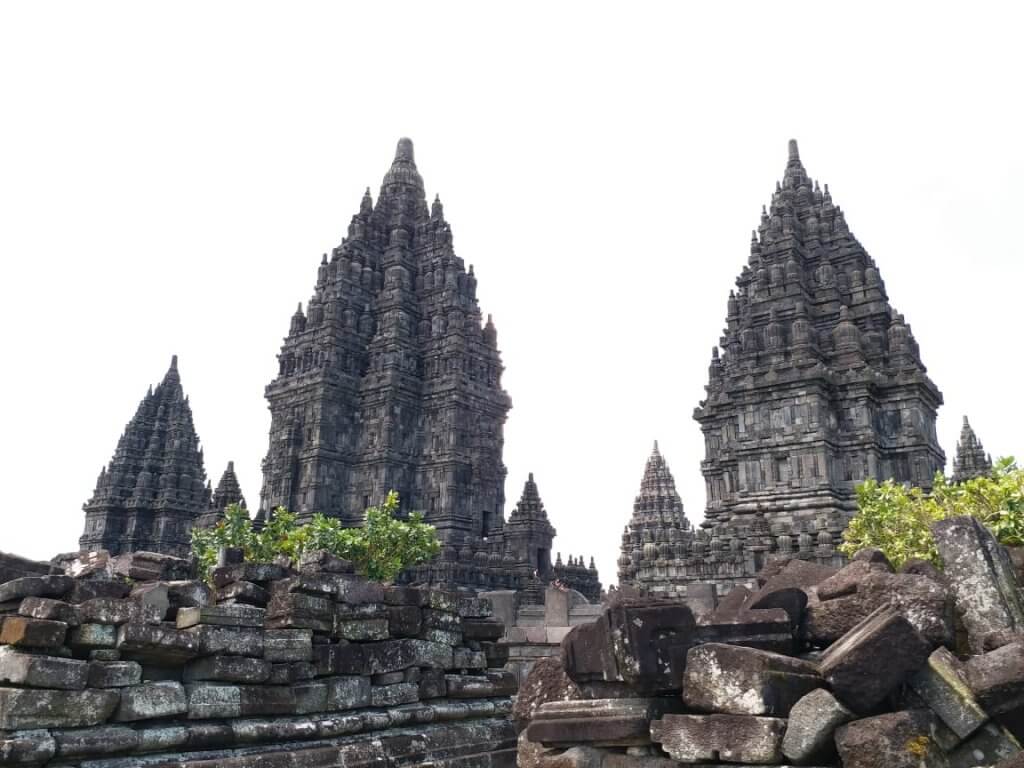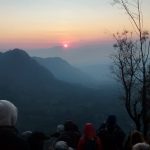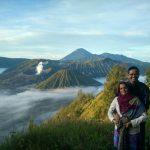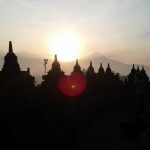Contents
The Complex of Prambanan Temple

This magnificent Shiva temple derives it name from the village where it is located. Locally known as the Loro Jonggrang Temple, or the temple of the “Slender Virgin”, it is the biggest and most beautiful Hindu temple in Indonesia. Seventeen kilometers east of Jogjakarta, it is believed to have been built by King Balitung Maha Sambu in the middle of the ninth century. Its parapets are a domed with a bas-relief depicting the famous Ramayana Story. The first open air theater on the southern side of the temples was built in 1960 and the new on the western side of the temple in 1988. During full moon evenings in the month from May to October, the Ramayana ballet is performed right here. The complex of Prambanan lies among green fields and villages. It has eight shrines, of which the tree main ones are dedicated to Shiva, Visnu and Brahma. The main temple of Shiva rises to a height of 130 feet and houses the magnificent statue of Shiva’s consort, Durga.
Ramayana dance
This is drama dance has been performed for a very long time, by people around Prambanan Temple every full moon,. Ramayana is performed without dialogue, but dance and gamelan accompaniment only. The story was taken from the relief of Prambanan temple. And now, this ballet is regularly performed on the grand stage built by government in Prambanan compound and other place.
Ratu Boko Heritage Site
At the complex of Ratu Boko heritage site, we can find variety inheritance of archaeological sites. Every structure is arranged in good harmony and surrounded by fence. There are many gates connecting the fence completed with stairs, terrace and trail. Besides those sacred buildings, there are also other building s like ponds and caves. The name Kraton given by the local community around that area indicates that Ratu Boko site was the living area and the center of government as well at that time.
Ratu Boko site was built by Rakai Panangkaran in 792 AD and called Abhayagiri Wihara. Rakai Panangkaran built Abhayagiri Wihara after resigning from his throne. He ruled from 764 784 AD and than continued by his successor who is in fact his son, Rakai Panarabwan. Fifty three year lather (856 AD), the name Ratu Boko had changed into Kraton Walaing which proclaimed by Rakai Walaing pu Kumbhayoni who recognized as the Vasal King. He ruled from 856-863 AD and called himself as the descend of Rakai I Hulu. Some opinion said that the process of renovation could become attraction for the tourists, because it is a rare occasion for tourists to see the renovation process lively.
Smaller Temples
Candi Kalasan
Candi Sambisari
Candi Sewu Plaosan
Candi Sojiwan
Further information please contact us
Recomended Tours to Prambanan Temple
- Amazing Bromo Sunrise Tour from ProbolinggoBromo sunrise tour from Probolinggo, to watch sunrise and panoramic view from a viewpoint, then climb up 250 steps to the rim of Bromo crater.
- Amazing Bromo Sunrise Tour Depart From SurabayaBromo Sunrise Tour departs at midnight from Surabaya to watch the sunrise, Bromo panoramic view, and climb 250 steps up to the rim of Bromo Crater.
- Amazing Bromo Day Tour Depart from SurabayaBromo Day Tour starts from Surabaya in the morning to watch the Bromo panoramic view, walk on a volcanic sand area, climb 250 steps to the rim of the crater.
- Wonderful Borobudur Prambanan One Day Tour from YogyakartaOne day tour to visit BOROBUDUR temple one of the UNESCO world site heritages then to PRAMBANAN largest complex of Hindu temple,




